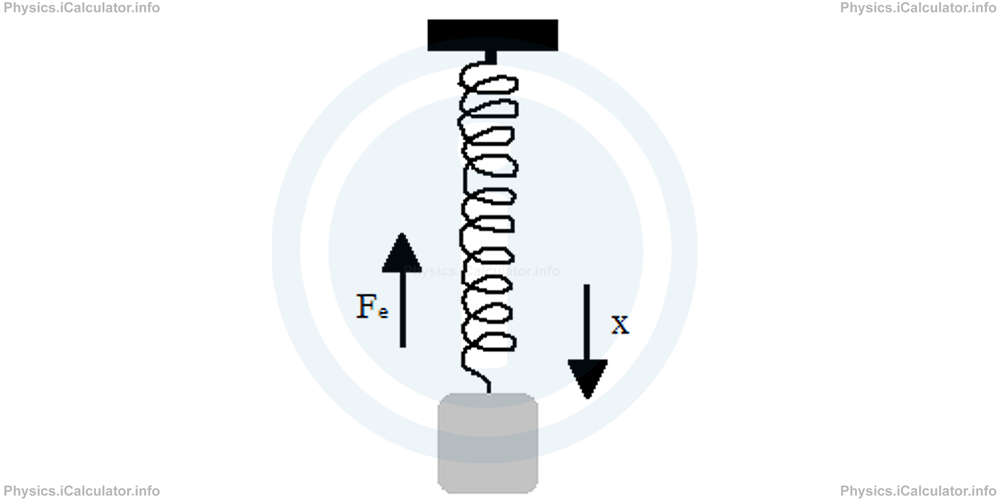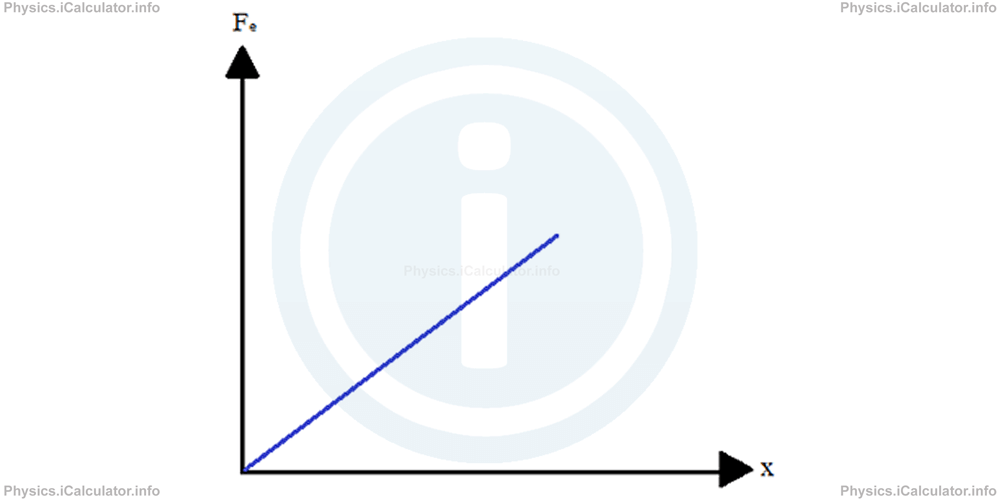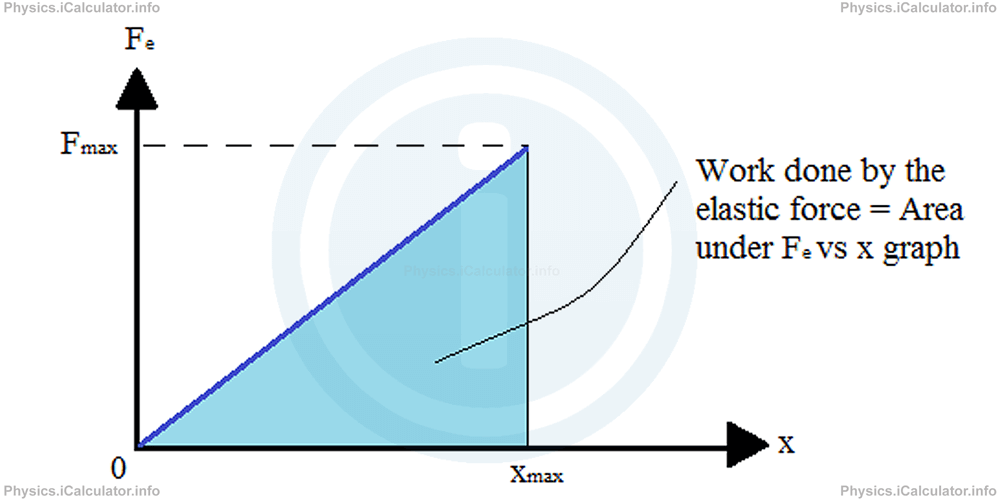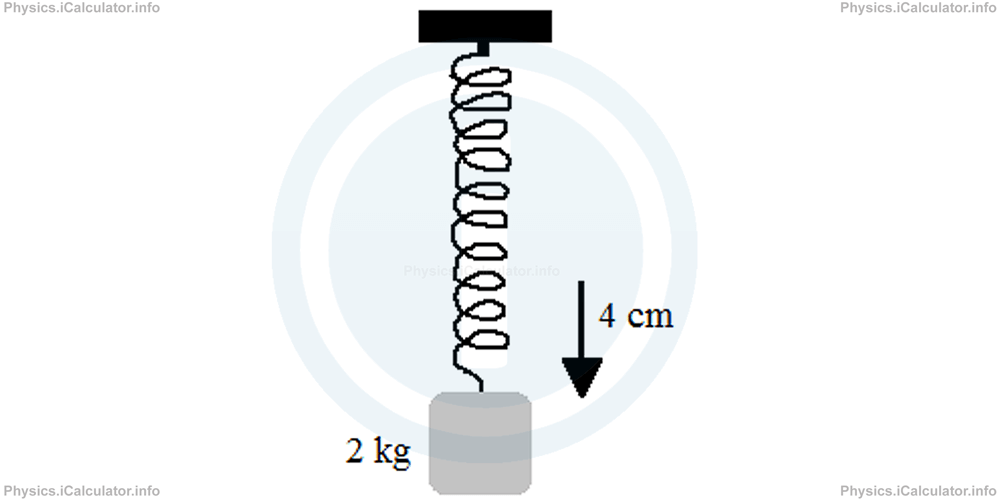Menu
Physics Lesson 5.4.1 - The Meaning of Elastic Potential Energy
Please provide a rating, it takes seconds and helps us to keep this resource free for all to use
Welcome to our Physics lesson on The Meaning of Elastic Potential Energy, this is the first lesson of our suite of physics lessons covering the topic of Elastic Potential Energy and Combination of Springs, you can find links to the other lessons within this tutorial and access additional physics learning resources below this lesson.
The Meaning of Elastic Potential Energy
In the Physics tutorial "Work. Energy. Types of Energy", it was stated that energy is the ability to do work, i.e. to make an object move at a certain linear distance r⃗ by using a force F⃗. When this linear distance lies according to a single basic direction, we can write Δx⃗ instead of r⃗.
A compressed spring can also do work on an object when released, i.e. it can push the object by x⃗ units by exerting a force F⃗ on it. In the Physics tutorial "Types of Forces III (Elastic Force and Tension)", we have called this (restoring) force exerted by an extended or compressed spring as Elastic Force (F⃗e).

It was found that Fe = - k × x where k is the spring constant and x the deformation (extension or compression) of the spring. The sign minus means the elastic force is in the opposite direction to the direction of spring deformation. The above formula is known as the mathematical expression of the Hooke's Law, whose F vs x graph is shown below.
The Elastic force vs Spring Deformation (Fe vs x) graph for cases when the Hooke's Law is applied, looks like the one shown below:

Also, in the Physics tutorial "Dot (Scalar) Product of Two Vectors" it was stated that Work - as a dot product of force and linear distance - is geometrically represented by the area under the Force vs Position graph. This rule is also valid for the elastic force vs extension graph as well. Therefore, it is obvious that the area under the elastic force vs deformation graph represents the work done to extend or compress a spring but at the same time, it also represents the work done by the spring on objects in contact when it is released and tries to turn back to the unstretched position. This work contributes in changing the potential energy of the spring, which is otherwise known as Elastic Potential Energy, EPE. Look at the graph:

From the above graph, it is obvious that elastic force is not constant. It increases at the same rate from 0 to Fmax. During this process, the spring stretches (or compresses) from 0 to xmax.
From geometry, it is known that the area of a right triangle as the one represented by the graph, is
Substituting the above values, we obtain for the elastic potential energy EPE of a spring:
Since Fe = k × x (we are dealing only with the value of elastic force, not with its direction; that's why the negative sign does not appear here), we obtain:
Or
The above equation is the formula of the elastic potential energy stored in an elastic object when it is stretched or compressed. It is always positive because whatever sign we get for x, when it is raised at power two, it becomes positive.
Example 1
A 2 kg object is hanged on an elastic spring and as a result, the spring stretches by 4 cm as shown in the figure.

What is the elastic potential energy stored in the spring during this process? For simplicity, take g = 10 N/kg.
Solution 1
First, we need to calculate the spring constant k. Thus, since the object's weight is numerically balanced by the elastic force, we can write:
m × g = k × x
Thus,
= 2 kg × 10 N/kg/4 cm
= 2 kg × 10 N/kg/0.04 m
= 20 N/0.04 m
=500 N/m
Therefore, applying the equation of Elastic Potential Energy, we obtain
= 500 N/m × (0.04 m)2/2
= 0.8 J/2
= 0.4 J
You have reached the end of Physics lesson 5.4.1 The Meaning of Elastic Potential Energy. There are 3 lessons in this physics tutorial covering Elastic Potential Energy and Combination of Springs, you can access all the lessons from this tutorial below.
More Elastic Potential Energy and Combination of Springs Lessons and Learning Resources
Whats next?
Enjoy the "The Meaning of Elastic Potential Energy" physics lesson? People who liked the "Elastic Potential Energy and Combination of Springs lesson found the following resources useful:
- Definition Feedback. Helps other - Leave a rating for this definition (see below)
- Work, Energy and Power Physics tutorial: Elastic Potential Energy and Combination of Springs. Read the Elastic Potential Energy and Combination of Springs physics tutorial and build your physics knowledge of Work, Energy and Power
- Work, Energy and Power Revision Notes: Elastic Potential Energy and Combination of Springs. Print the notes so you can revise the key points covered in the physics tutorial for Elastic Potential Energy and Combination of Springs
- Work, Energy and Power Practice Questions: Elastic Potential Energy and Combination of Springs. Test and improve your knowledge of Elastic Potential Energy and Combination of Springs with example questins and answers
- Check your calculations for Work, Energy and Power questions with our excellent Work, Energy and Power calculators which contain full equations and calculations clearly displayed line by line. See the Work, Energy and Power Calculators by iCalculator™ below.
- Continuing learning work, energy and power - read our next physics tutorial: Power and Efficiency
Help others Learning Physics just like you
Please provide a rating, it takes seconds and helps us to keep this resource free for all to use
We hope you found this Physics lesson "Elastic Potential Energy and Combination of Springs" useful. If you did it would be great if you could spare the time to rate this physics lesson (simply click on the number of stars that match your assessment of this physics learning aide) and/or share on social media, this helps us identify popular tutorials and calculators and expand our free learning resources to support our users around the world have free access to expand their knowledge of physics and other disciplines.